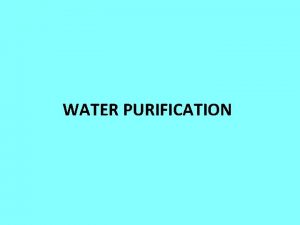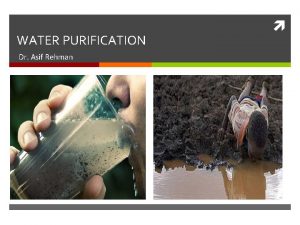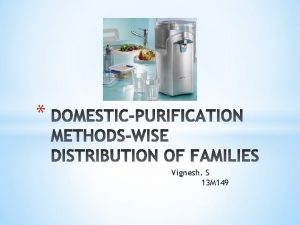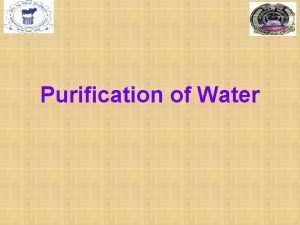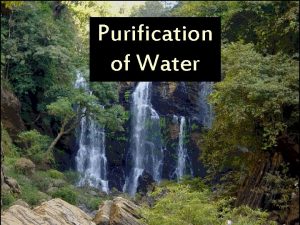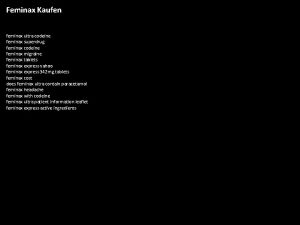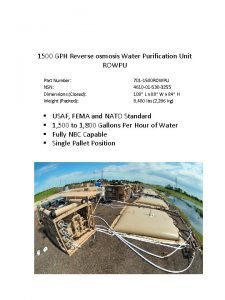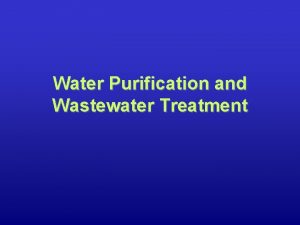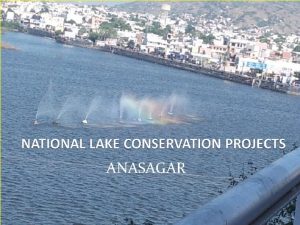TRADITIONAL WATER PURIFICATION TECHNIQUES Traditional water treatment methods








- Slides: 8

TRADITIONAL WATER PURIFICATION TECHNIQUES

Traditional water treatment methods • All over the world rural communities – adopted simple & rudimentary techniques – mainly aims at filtering out the visible impurities • These methods can remove certain types of particles in water

Some of the traditional treatment methods are. . • • • Filtration through winnowing sieve Filtration through cloth Filtration through clay vessels Clarification & filtration through plant material Jempeng stone filter method

1. Filtration through winnowing sieve • Used widely in Mali (Bamaka area) • Used when the water source is polluted by wind borne impurities such as dry leaves, stalks, & coarse particles • The raw water is passed through a winnowing sieve & the impurities are filtered • Sieve cannot filter fine suspended particles in water, hence cannot be used when raw water is turbid or muddy

2. Filtration through cloth • Commonly used in villages in India, Mali, the southern part of Niger & other parts of developing world • Thin white cotton cloth or a discarded garment is used as the filter medium • Can filter impurities like plant debris, insects, dust particles or coarse mud particles • Filtration of suspended particles- limited extended • Not suitable for turbid water • In some Indian villages, wood ash of Sal tree is mixed with water

3. Filtration through clay vessels • Used in Egypt • Clay vessels with a suitable pore size are used • Turbid water is collected in a big clay jar & allowed to settle down • Then water in the jar will trickle down through the porous clay wall of the jar • This trickled water is collected in a vessel by placing it at the bottom of the porous clay jar

4. Clarification & filtration through plant material • Commonly used in Tamil Nadu & Kerala, India • Highly turbid water fine suspended & colloidal particles are first coalesced & settled out using nuts of a locally available plant, which is then filtered using cloth filters • Roots of the rhizomes from ramacham are placed in a clay jar, which has tiny holes in its bottom • Raw water is poured into this jar, & then the water is allowed to filter through this layer of roots • Usually this filtered is vey clear & has a pleasant smell

5. Jempeng stone filter method • Developed in Saringan batu Jempeng Bali, Indonesia • A small artificial pond or a by-pass channel is cut by the side to an irrigation canal, which carries muddy water • Jempeng stone filter units are placed in the artificial ponds • The filter unit is carved out of a porous material called cadas • Average height of 60 cm & diameter of 50 cm & a wall with a thickness of 10 -12 cm • Muddy water filters through the porous wall & gets collected inside

